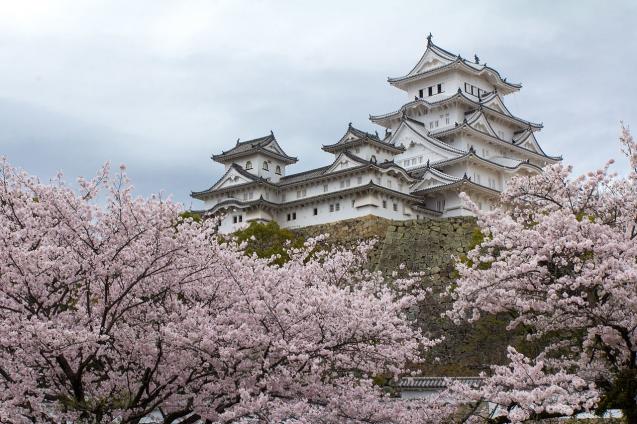
Nagoya castle’s beauty compliments all seasons in Japan. During winter season, the silver blanket of snow adds to the castle’s exquisite and elegant architecture. It is also one of the best spots for “hanami” or traditional flower viewing during spring season, blending its faded pale blue color to sakura’s sweet hue. The crisp season of autumn gives the brightest shade of colors around this royal place; and summer season means merriment in Nagoya City, as the locales celebrate Nagoya Castle Summer Festival.
Within the heart of Nagoya City lies Nagoya Castle (Nagoya-jo), one of the three major castles in Japan along with Himeji and Kumamoto castles. A warlord named Tokugawa Ieyasu ordered the construction of this palace on 1610, and completed on 1612. During World War II, the bombs have devastated the castle, but some parts and relics survived the ravage. It was reconstructed on year 1959.
The castle is known for its dolphin golden ornament called “shachihoko” or “kinshachi”, a mythical creature with a carp-like body and a head of a tiger. Its distinct sloping stone wall also adds to its grace.
Photo by Miya.m. Licensed under Creative Commons. (https://creativecommons.org/licenses/by-sa/3.0/deed.en)
Things to see
Inside the castle’s five-level keeps are exhibits of aged samurai and antique Japanese warrior suits. On the topmost level is an observation deck to view the entirety of Nagoya City. Souvenir shops are also present to raise funds for the castle’s continuous restoration.
Within Nagoya, one can visit nearby attractions such as art and science museums, a commemorative car museum, shrines, parks and gardens. Dozens of restaurants are also present within a kilometer, serving Japanese cuisine from slow to fast food restaurants.
From Tokyo, Nagoya can be accessed by the JR Tokaido Shinkansen (bullet trains), which costs about 10,500 yen one way. Take note that the tickets have to be purchased one day in advance and seats are fixed.
When you get to Nagoya station, take the Higashiyama Subway Line to Sakae Station, and change to the Meijo Subway Line to Shiyakusho (City Hall) Station. From there, you can take a free walk to Nagoya castle.
One can also take a overnight or daytime bus trip, bound to Nagoya station, which often has green signage. From Nagoya Station, take a key route bus, get off at the “Nagoyajo Seimon-Mae” stop of Sakae No. 13 (near Prefectural Police Headquarters); or alight at the “Shiyakusho” stop of the Key Route Bus No. 2 (near the city hall).
There are free English-speaking tours offered by Aichi Goodwill Guides Network (AGGN). No reservations are needed for regular tours, (Sunday, Monday, Wednesday and Saturday). For private tours, reservations are required seven days in advance.
When you get there, you must follow the common local customs and ordinances in Japan such as not eating in the streets, bowing instead of shaking hands, and alike. Respect and feel the culture. Unlike most Japanese cities, Nagoya restricts smoking in public places.
Submit Itinerary
Signup
- Sign Up
- Already a member? Login Now!
